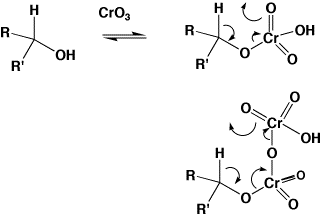Minor Categories of Organic Pericyclic Reactions.
5. Metallo and other Synthetically Useful Reactions
Many diverse reactions of synthetic interest could be classified as pericyclic. For example, Chromium(VI) (and other metal) oxidations of alcohols proceed via cyclic transition states. Depending on whether chromate or dichromate is used, this would be either a 6 or an 8 electron process
Selenium dioxide oxidations and Aluminium-mediated hydride reductions show similar properties. Other elements also show pericyclic mechanisms, a good example of which involves boron (X here is a chiral auxilliary);
6. Co-arctic Reactions
The new category involves the simultaneous cleavage of four σ bonds in a single concerted reaction.
In this category also rank Br+ and oxygen atom transfer reactions between alkenes which involve a total of four changes in the σ-bonds at a single atom or group.
7. Pseudopericyclic Reactions
In a pseudopericyclic reaction, there is no continuous orbital overlap around the ring of breaking and forming bonds. All pseudo-pericyclic reactions are allowed; there are no anti-aromatic transition states. Pseudo-pericyclic reactions can have lower barriers than pericyclic alternatives.
